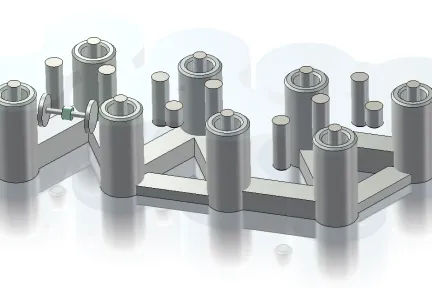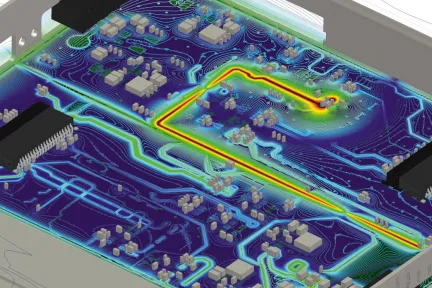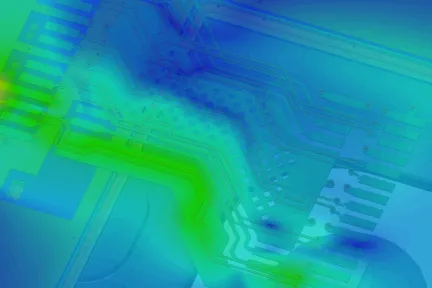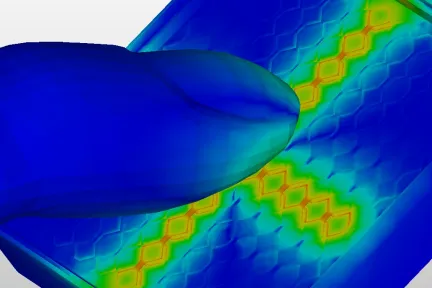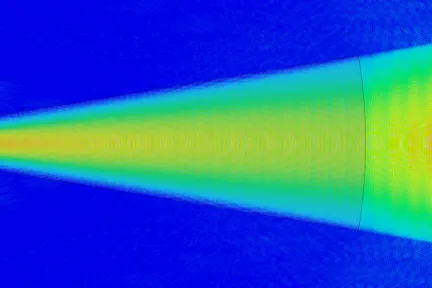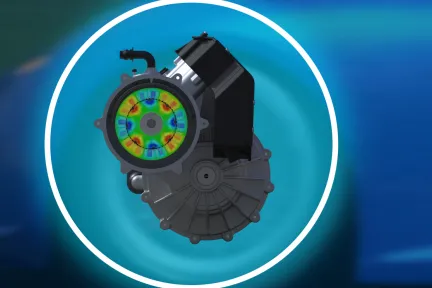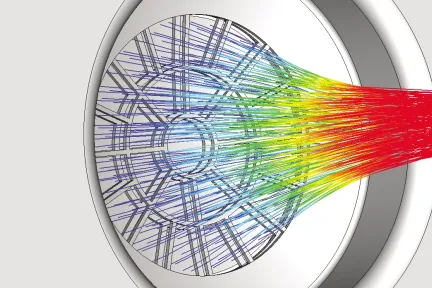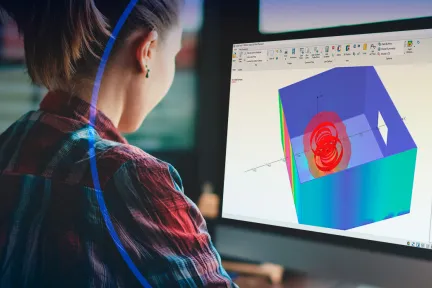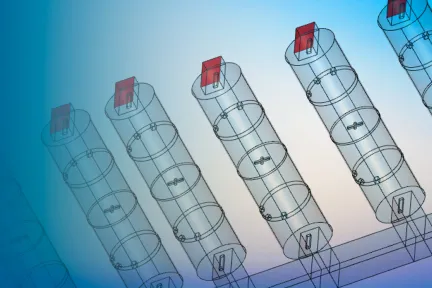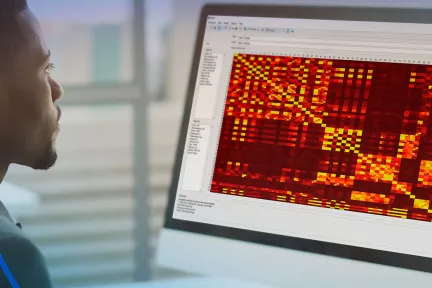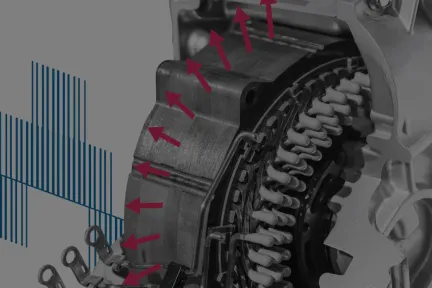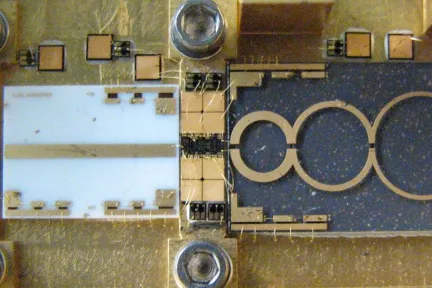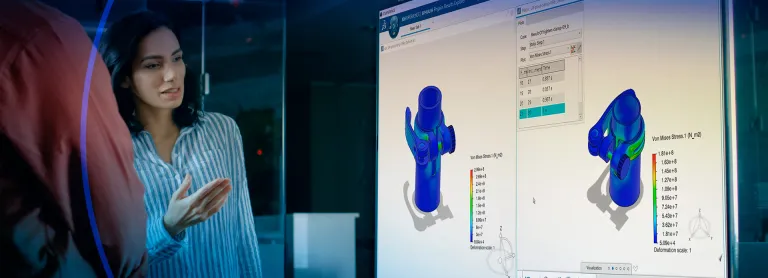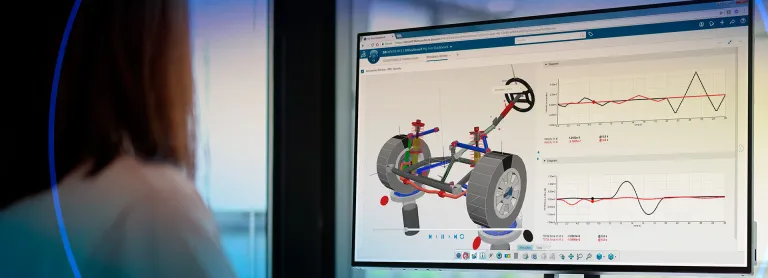Electromagnetic Simulation
Simulation and Analysis of Electromagnetic Fields
Electromagnetic Simulation Software
Electromagnetic simulation software enables engineers to investigate the electromagnetic properties of components or whole systems efficiently. Electromagnetic (EM) systems often pose multiscale challenges, such as wide frequency ranges and electrically large structures with fine detail. Dedicated solvers exploit specific numerical technologies for fast and accurate simulation. EM simulation can be applied throughout the entire design process. From the inception of an idea, to the synthesis of components to meet specifications, to analyzing the electromagnetic performance under operational conditions: virtual prototypes are transforming the design cycle.
SIMULIA Electromagnetic Simulation Key Benefits
Faster Design Turnaround Times
Simulation accelerates analysis and optimization, allowing shorter design cycles and providing a competitive advantage.
Reduced Reliance on Testing
Compared to physical testing, simulation is faster, more cost-effective and can be implemented earlier in the design cycle. It can also reveal behavior not visible in a test
Understand Complex Systems
High-performance simulation can model the behavior of large or complex systems, such as antenna performance on a busy street, signal integrity on a high-speed PCB, or safety of a medical device in the human body
Reduced Work through Automation
Automated meshing, optimization and post-processing removes tedious set-up work and lets engineers get the results they need faster
Leverage Design Models
Unified modeling and simulation (MODSIM) means simulation can be performed directly on geometry from CATIA or SOLIDWORKS in a unified design environment, reducing the time needed for model building
Full Analysis with Multiphysics Simulation
Electromagnetic simulation can be supplemented by other disciplines, such as fluids simulation, structures simulation, multibody system simulation and vibro-acoustic simulation
Improve Product Performance and Quality
EM simulation software is a game changer for reducing the time and cost of bringing a product to market. It is widely used not just in the high-tech industries of electronics and communication, but also in aerospace, defense, transportation and life sciences. Analysis with EM software ranges from individual components such as antennas, sensors and chips up to entire devices, including aircraft, smartphones and MRI.
Co-design within the SIMULIA product portfolio integrates EM simulation into industry processes. Unified modeling and simulation (MODSIM) accelerates the process of evaluating the performance, reliability and safety of materials and products. Engineers can investigate trade-offs, mitigate issues and optimize the design before committing to physical prototypes, reducing development risk. Multiphysics design flows on the 3DEXPERIENCE platform drive the development process from the earliest stages. Simulia electromagnetic simulation software is available on the 3DEXPERIENCE platform and standalone.
EM Simulation Applications
Antenna Simulation
Electromagnetic simulation tools are invaluable throughout the entire process of antenna development and integration. They aid in creating functional antenna designs, refining them to align with requirements, and evaluating their performance and RF exposure post-installation. The SIMULIA suite offers antenna engineers the necessary tools for various applications.
Electromagnetic Interference Simulation
Controlling electromagnetic interference (EMI) is a crucial aspect of electronic device design and manufacturing. Products must adhere to international Electromagnetic Compatibility (EMC) standards to ensure that electromagnetic emissions are within permissible limits and that these devices are not susceptible to external interference. Electromagnetic simulation helps identify potential issues and can streamline the development process with respect to certification.
RF Simulation
CST Studio Suite technology offers a variety of electromagnetic solvers for simulating microwave and radio frequency filters and components. The Time Domain solver is ideal for broadband traveling-wave components, while the Frequency Domain solver is great for highly resonant structures like bandpass filters. Special features include the moving mesh and model order reduction method for accurate and fast simulations. Waveguide ports help excite transmission lines, and System Assembly & Modeling simplifies complex device modeling. Fest3D's solver technology is efficient for simulating waveguide structures.
Optical Simulation
CST Studio Suite adeptly and effectively simulates wave behavior at optical frequencies. Automatic import links to photonic device layout tools generate 3D simulation models effortlessly. The materials library features optical frequency material models. Post-processing templates can compute standard industry metrics. With high-performance computing options and electrically large components can be simulated.
Low-Frequency and Electric Machine Simulation
SIMULIA's versatile tools cater to diverse user needs across industries, ensuring accuracy for critical applications like medical devices and magnet design. Advanced modeling capabilities allow in-depth analysis of devices with permanent magnets or superconducting coils. Tailored interfaces assist users in simulating and enhancing high-efficiency motors and generators. Electromagnetic simulation aids in creating sustainable machines with optimal performance.
Charged Particle Dynamics Simulation
The SIMULIA simulation portfolio offers diverse solvers for simulating devices with free-moving particles and electromagnetic fields. It includes technologies from CST Studio Suite and Opera. Charged particle dynamics simulation involves analyzing particle emission, electrostatic acceleration, magnetostatic focusing, and relativistic motion equations at high energies.
SIMULIA Electromagnetic Simulation for Efficient Antenna Design
Efficient Simulation of Highly Resonant Structures
Analyze the Interaction of Electromagnetic Fields with the Human Body
Virtually Test Compliance with EMC Standards
Integrate Simulation in Electronics Design Automation (EDA) Workflows
Electrostatic, Magnetostatic and Low Frequency Electromagnetic Field Simulation
Photonic Circuit, Graphene, Metamaterial and Photonic Crystal Simulation
Simulation of Electric Motors, Generator and Transformers
Simulation of Particles in Electromagnetic Fields
SIMULIA Electromagnetic Simulation Software Products
SIMULIA develops simulation technology that can be used to calculate electromagnetic fields from statics to optical frequencies in a wide range of application areas.
Electromagnetic Field Simulation Software
Electromagnetic and Electromechanical Simulation
Antenna Design Software
Hybrid Multi-Solver Domain Decomposition Electromagnetic CAD Technology
A Software tool for Analyzing Complex Passive Microwave Components
Determines the Radiofrequency Breakdown Power Level in Passive Devices
Electronic Device Characterization
Control Magnetic Noise & Vibrations of Electric Machines and Drives from Concept to Preliminary Design Phase
Unify Radio-Frequency measurement, modeling, and simulation workflows
SIMULIA Electromagnetic Simulation Software on 3DEXPERIENCE Platform
SIMULIA Electromagnetic Simulation software products are available on the 3DEXPERIENCE platform are packaged as Roles to get you up to speed faster and work more efficiently with all needed applications available at your fingertips. Select a package that corresponds to your role in an organization.
Electromagnetic Simulation Resources
Explore the technological advancements, innovative methodologies, and evolving industry demands that are reshaping the world of Electromagnetics. Stay a step ahead with SIMULIA. Discover now.
FAQs About Electromagnetic Simulation
Also Discover
Learn What SIMULIA Can Do for You
Speak with a SIMULIA expert to learn how our solutions enable seamless collaboration and sustainable innovation at organizations of every size.
Get Started
Courses and classes are available for students, academia, professionals and companies. Find the right SIMULIA training for you.
Get Help
Find information on software & hardware certification, software downloads, user documentation, support contact and services offering


